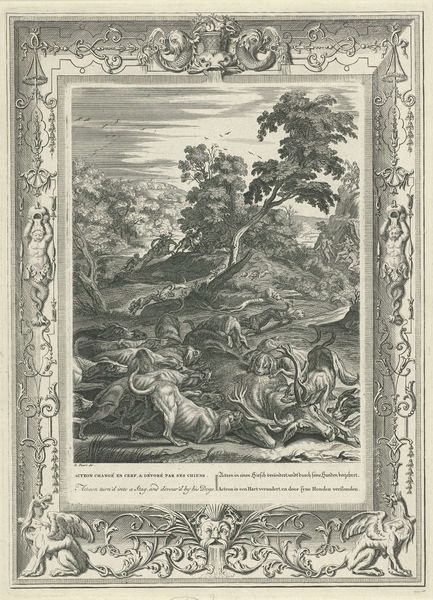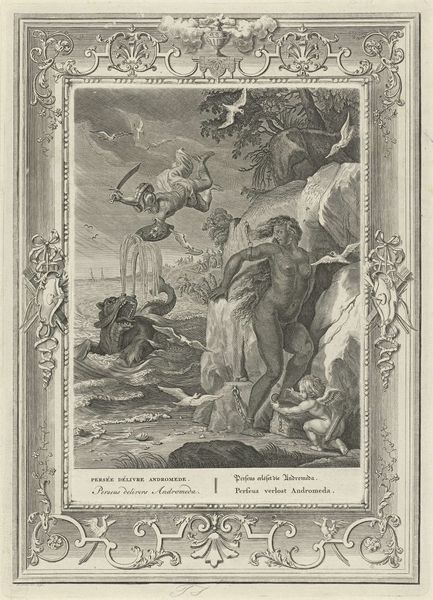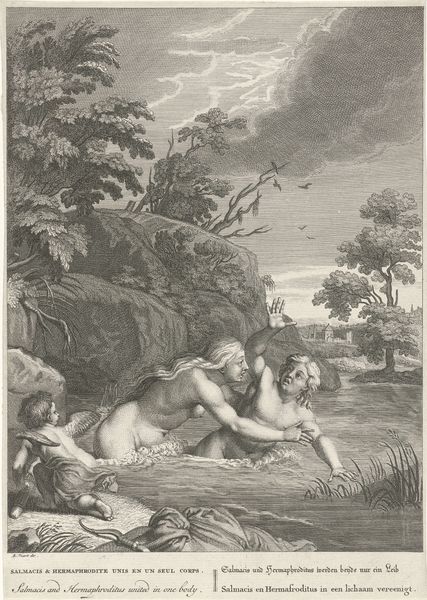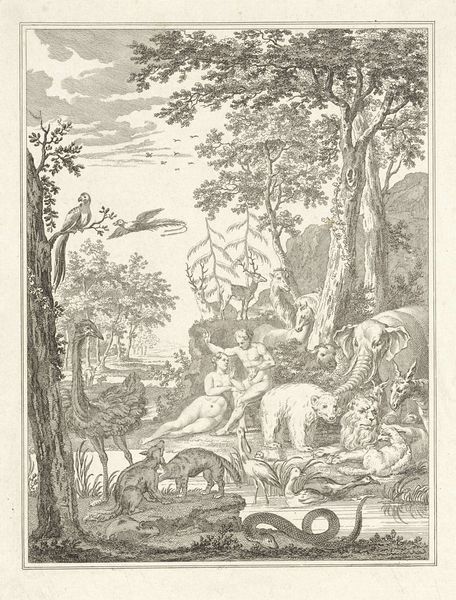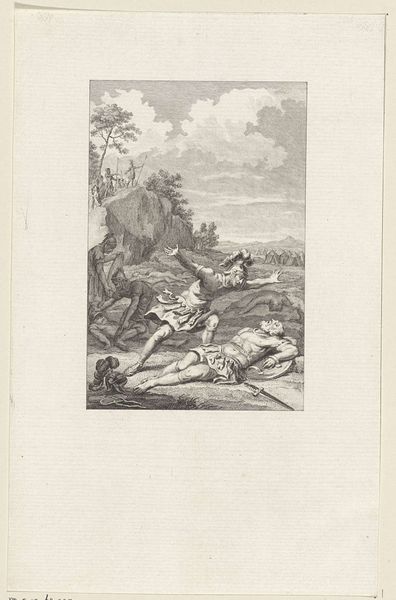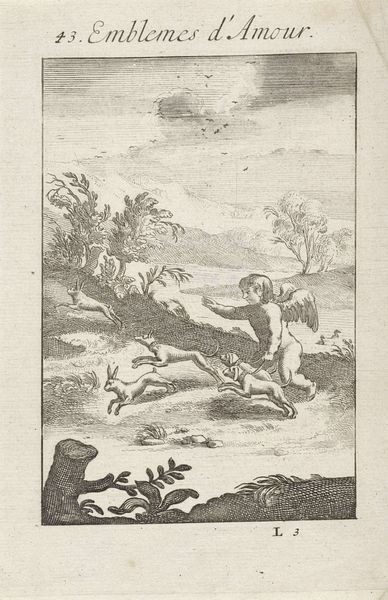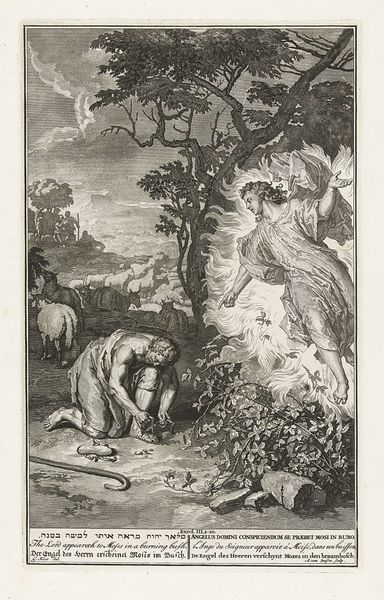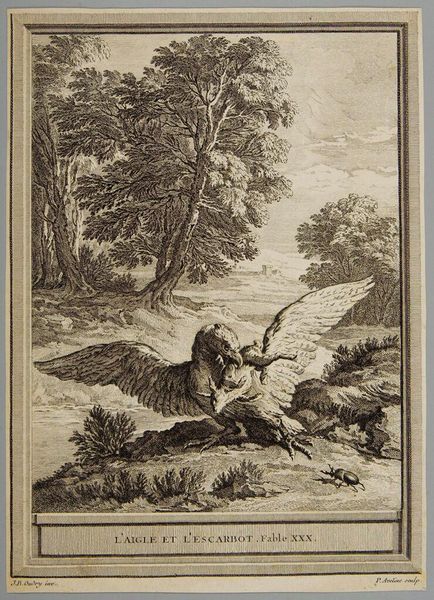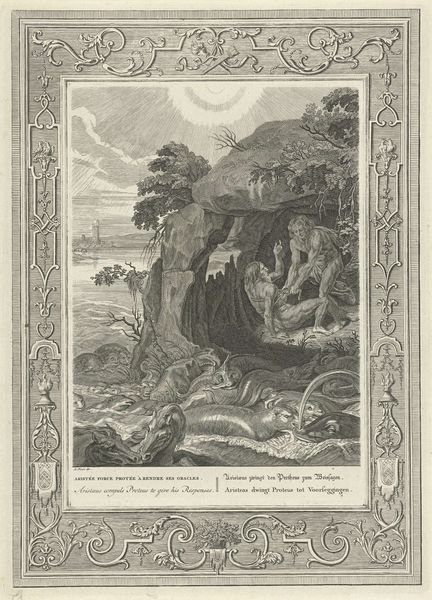
drawing, engraving
#
drawing
#
baroque
#
pen drawing
#
landscape
#
figuration
#
mythology
#
engraving
Dimensions: height 230 mm, width 175 mm, height 357 mm, width 255 mm
Copyright: Rijks Museum: Open Domain
Curator: This is Bernard Picart’s "Narcissus verliefd op zijn eigen spiegelbeeld", dating back to 1733. It’s currently held in the Rijksmuseum collection and done with the medium of engraving. Editor: My first impression is one of languid melancholy, that inescapable doom settling over the scene like a humid fog. Curator: Exactly. This rendering, a pen drawing expertly translated into engraving, serves to highlight the complex role that mythology had within 18th-century aristocratic European culture. Stories such as this of Narcissus served as moral lessons, and as self-criticism. Editor: Note how Eros hovers in the upper portion, bow drawn, seemingly orchestrating the tragic infatuation. The whole layout has this feeling of destiny. It’s less about capturing a naturalistic moment, and more about embodying the archetypal trap of vanity. The Baroque really reveled in its capacity to do that. Curator: Picart presents the narrative at the moment of transition – Narcissus literally transforming into a flower. He has his human form, but with flowers blooming about his head already. The multiple languages provided along the bottom also highlights that accessibility. This art was designed to be consumed and discussed on a wide scale. Editor: That bloom on his head does serve as a sort of morbid halo, though, doesn't it? Emphasizing his imminent demise and transformation into something beautiful, yet tragically devoid of consciousness. Even that reclining dog feels significant; a symbol of fidelity and companionship that's sadly lost. Curator: Picart certainly understood the value of dissemination, but he would have needed an educated elite to take the message and proliferate the mythology further. Those elite patrons of the time used these visual narratives to bolster their own sense of sophistication and moral judgment. Editor: Indeed, a stark warning draped in exquisite artistry. Ultimately, it makes us reflect on how symbols persist. Picart, in the context of the Baroque era, used the imagery of Narcissus in a way that we might find surprisingly insightful today. Curator: Well, I would only add that Narcissus as a symbol is eternally useful, and serves very particular cultural anxieties surrounding modernity at that time. I think these mythological prints help show that.
Comments
No comments
Be the first to comment and join the conversation on the ultimate creative platform.
